
The C-82 Packet is a twin-engine, twin-boom cargo aircraft designed and built by Fairchild Aircraft. It was used briefly by the United States Army Air Forces and the successor United States Air Force following World War II.
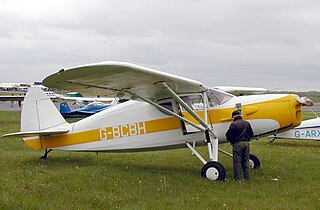
The Fairchild Model 24, also called the Fairchild Model 24 Argus and UC-61 Forwarder, is a four-seat, single-engine monoplane light transport aircraft designed by the Fairchild Aviation Corporation in the 1930s. It was adopted by the United States Army Air Corps as UC-61 and also by the Royal Air Force. The Model 24 was itself a development of previous Fairchild models and became a successful civil and military utility aircraft.
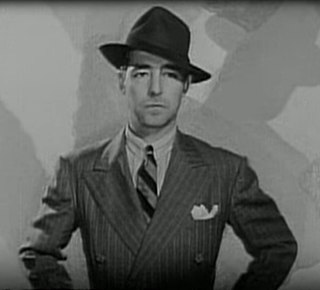
Kenne Duncan was a Canadian-born American B-movie character actor. Hyped professionally as "The Meanest Man in the Movies," the vast majority of his over 250 appearances on camera were Westerns, but he also did occasional forays into horror, crime drama, and science fiction. He also appeared in over a dozen serials.
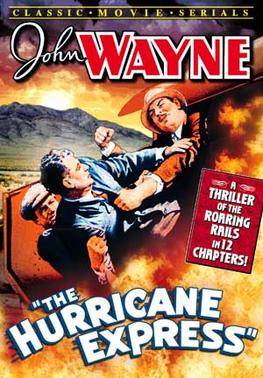
The Hurricane Express is a 1932 American Pre-Code 12-chapter Mascot Pictures film serial. Written by Colbert Clark, Barney Sarecky, Wyndham Gittens, George Morgan, and J.P. McGowan, the serial was directed by Armand Schaeffer and J.P. McGowan and produced by Nat Levine. The Hurricane Express stars John Wayne as aircraft pilot Larry Baker. Wayne goes after a mystery villain named "The Wrecker", who was responsible for a train crash that killed Baker's father.
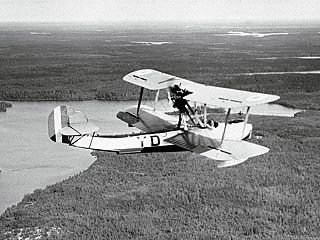
The Canadian Vickers Vedette was the first aircraft designed and built in Canada to meet a specification for Canadian conditions. It was a single-engine biplane flying boat purchased to meet a Royal Canadian Air Force (RCAF) demand for a smaller aircraft than the Vickers Viking with a much greater rate of climb, to be suitable for forestry survey and fire protection work. The type went on to have a long and distinguished career in civil operations in Canada. Most of the topographical maps in use in Canada today are based on photos taken from these aircraft.

King of the Texas Rangers (1941) is a Republic film serial. Set in the years prior to America entering World War II, the plot is slightly anachronistic in that the serial features a mix of period western and modern elements, which was not unknown in the B-Western films also produced by Republic. Although the serial's plot involves cowboys battling Axis agents in Texas, Nazis are never named as such, but their presence is strongly implied within the serial.
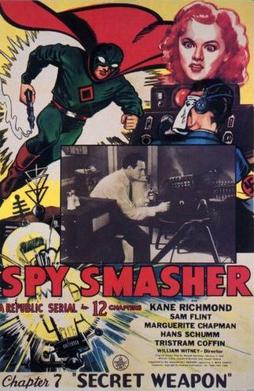
Spy Smasher is a 12-episode 1942 Republic serial film based on the Fawcett Comics character Spy Smasher which is now a part of DC Comics. It was the 25th of the 66 serials produced by Republic. The serial was directed by William Witney with Kane Richmond and Marguerite Chapman as the leads. The serial was Chapman's big break into a career in film and television. Spy Smasher is a very highly regarded serial. In 1966, a television film was made from the serial footage under the title Spy Smasher Returns.

Flying Disc Man from Mars is a 1950 Republic Pictures 12-chapter black-and-white science fiction adventure film serial, produced by Franklin Adreon, directed by Fred C. Brannon, that stars Walter Reed, Lois Collier, Gregory Gaye, James Craven, Harry Lauter, and Richard Irving. Disc Man is considered a weak example of the serial medium, even compared to other post-World War II serials. In 1958 Republic edited the serial's 167 minutes of footage into a 75-minute feature, released under the new title Missile Monsters.
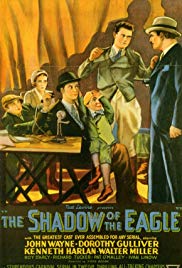
The Shadow of the Eagle is a 1932 American Pre-Code Mascot 12 episode film serial, directed by Ford Beebe and B. Reeves Eason and produced by Nat Levine. The film stars John Wayne in his first serial role. He would go on to star in two other serials for Mascot, The Hurricane Express (1932) and The Three Musketeers (1933). The Shadow of the Eagle is now in the public domain.
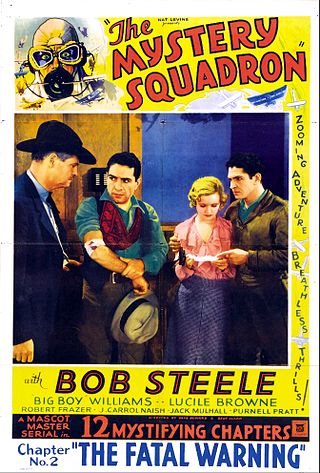
The Mystery Squadron is a 1933 American pre-Code 12-chapter Mascot film serial, directed by Colbert Clark and David Howard. The film was produced by Nat Levine, and stars Western star Bob Steele, Guinn "Big Boy" Williams, Lucile Browne, Purnell Pratt and Jack Mulhall. The Mystery Squadron made an impressive use of a great deal of aerial footage to enliven the action.

The Phantom of the Air is a 12-episode 1933 Pre-Code Universal film serial directed by Ray Taylor. The film stars Tom Tyler, who was cast most often in Westerns. Other actors include Gloria Shea, LeRoy Mason, Craig Reynolds and William Desmond.
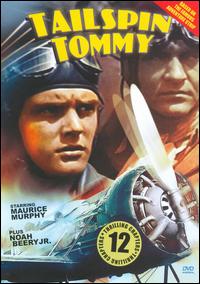
Tailspin Tommy is a 12-episode 1934 Universal film serial based on the Tailspin Tommy comic strip by Hal Forrest. Directed by Lew Landers and produced by Milton Gatzert, the serial was the 97th serial of the 137 released by that studio. The plot of Tailspin Tommy concerns a conflict over a government airmail contract.

Tailspin Tommy in the Great Air Mystery is a 12-episode 1935 Universal movie serial based on the Tailspin Tommy comic strip by Hal Forrest and starring Clark Williams, Jean Rogers and Noah Beery, Jr. The picture was the 96th of the 137 serials released by the studio.

Junior G-Men of the Air is a 1942 Universal film serial starring the Dead End Kids and the Little Tough Guys. A group of youthful flying enthusiasts join the "Junior G-Men" to help break up a planned attack on the United States.

Junior G-Men is a 1940 Universal film serial. It was Universal's 116th serial of their total of output of 137. The serial is one of the three serials starring "The Dead End Kids and Little Tough Guys" who were under contract to Universal at the time. The plot of Junior G-Men is a pre-World War II G-Man story about fifth columnists in the United States, with the FBI joining forces with youth to save the country.

Adventures of the Flying Cadets is a 13-episode 1943 Universal film serial directed by Ray Taylor and Lewis D. Collins.

Bruce Gentry – Daredevil of the Skies (1949) is a 15-episode Columbia Pictures movie serial based on the Bruce Gentry comic strip created by Ray Bailey. It features the first cinematic appearance of a flying saucer, as the secret weapon of the villainous Recorder.
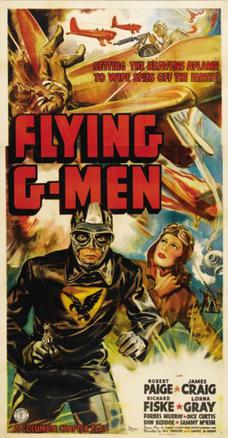
Flying G-Men is a 15-episode 1939 adventure film Film serial, directed by James W. Horne and Ray Taylor. The serial was the sixth of the 57 serials released by Columbia. Four "Flying G-Men" battle with enemy saboteurs intent on destroying American military defences.

The Fairchild FC-1 and its derivatives were a family of light, single-engine, high-wing utility monoplanes produced in the United States in the 1920s and 1930s. The aircraft was originally designed to provide a camera platform for Sherman Fairchild's aerial photography and survey business, Fairchild Aerial Surveys.
Doctor Satan's Robot is a 1966 made for television film condensed from the original 1940 Mysterious Doctor Satan film serial named after its chief villain. Master criminal Doctor Satan has a nemesis, a masked mystery man, the "Copperhead", whose secret identity is Bob Wayne. Wearing a copper mask, Wayne is searching for justice and revenge on Satan for the death of his step-father. With Doctor Satan creating a mechanical robot that will terrorize the world, Wayne is determined to stop the criminal plans of the evil doctor.



















